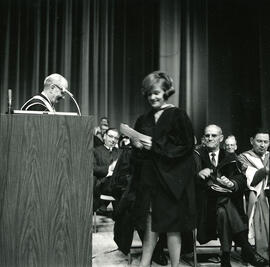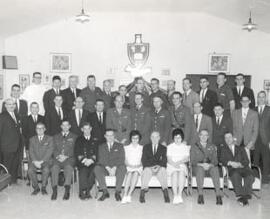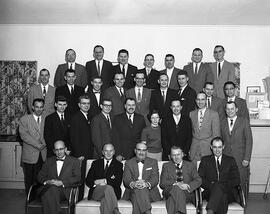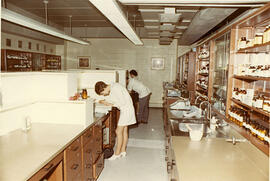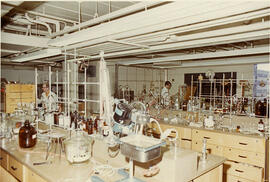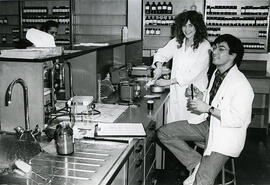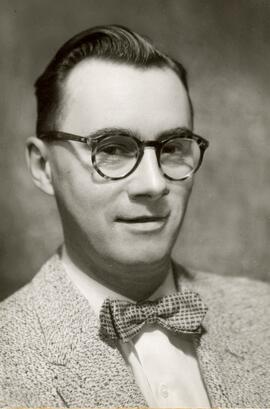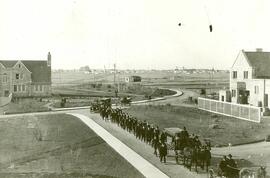Dr. Bruce Schnell, dean of Pharmacy and vice-president (academic); Peter Millard, professor of English who retired in 1992, and Reta Cowley, distinguished Saskatoon artist, examine one of the works at an exhibition of recent art acquisitions including several works from a bequest from the late Dr. Jean E. Murray. The works are part of the permanent collection.
Bio/Historical Note: Peter T. Millard was born in 1932 in Treorchy, Wales, and first came to Canada in 1955 to attend McGill University. He received a BA from McGill in 1959, and continued his education at Wadham College, Oxford, from which he received a BA and a PhD. Millard joined the University of Saskatchewan in 1961 as an Instructor in English; he eventually became head of the department. His subsequent academic career was distinguished. Besides authoring numerous books and articles, he served as the University’s don of residence, as chair of the English Department and as chair of the Faculty Association.He also served a one-year term as head of the Faculty Association. In 1973 he joined Saskatoon’s burgeoning gay liberation movement and quickly became an organizer and spokesperson in most of the province’s early battles to advance equal rights for gays and lesbians. He held leadership roles in the Gay Community Centre of Saskatoon, the Committee to Defend Doug Wilson, and the Coalition for Human Equality. On campus he organized a Gay Academic Union in 1975 and became the mentor/protector of two generations of lesbian and gay students. In 1991 he taught the University’s first gay studies course, an examination of social attitudes towards homosexuality in literature. In 1994 the University established the Peter Millard scholarship, Canada’s first university-administered scholarship for research in gay and lesbian studies. After his academic retirement in 1992, one of Millard’s chief pursuits was the writing of a personal memoir with the working title Or Words to That Effect. After his death the completed manuscript was added to the Peter Millard fonds at the University of Saskatchewan Archives. The memoir covers many aspects of Millard’s rich and wide-ranging life, including his student and academic careers and his dedication to the visual arts in both England and Saskatoon. He writes at length of his emotional life as a gay man and of his many experiences in gay activism. He retired from the U of S in December 1991. Peter Millard died 8 December 2001 after a short battle with a rare form of leukemia.


